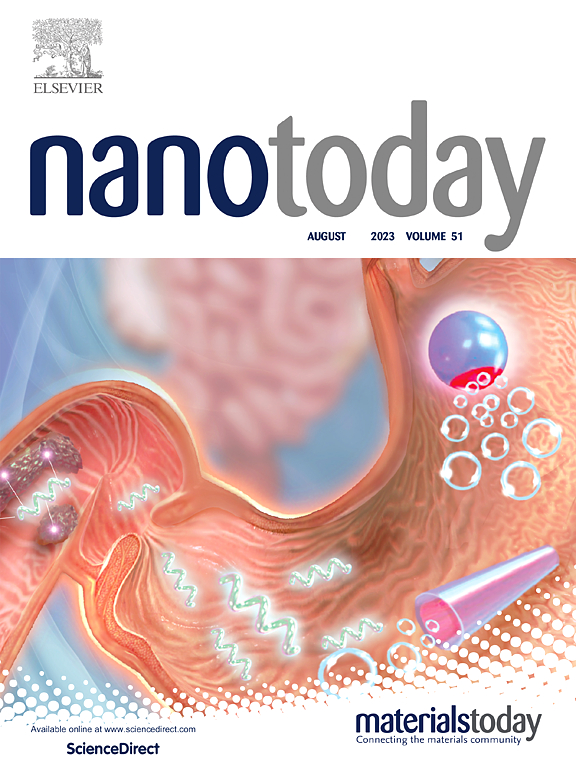Targeting a key pro-fibrotic factor S100A4 in cartilage to alleviate osteoarthritis progression and pain
IF 13.2
1区 材料科学
Q1 CHEMISTRY, MULTIDISCIPLINARY
引用次数: 0
Abstract
Osteoarthritis (OA) is the most prevalent degenerative joint disease marked by cartilage degeneration, synovial inflammation and pain, which seriously affects life quality of patients. However, due to unclear pathological mechanisms, there is still lack of specific targets at the molecular level for OA treatment. Since OA-related cartilage displays pathological features of fibrosis, such as increased secretion of collagen I (COL I) but decreased secretion of collagen II (COL II), and cartilage fibrosis is usually defined as a final-stage of OA, we hypothesized that fibrosis related factors could promote OA progression. By combining public databases with pathological analysis of clinical OA immunohistochemistry samples, we found that a key pro-fibrotic factor, S100A4, also named fibroblast specific protein-1 (FSP-1), was overexpressed by OA chondrocytes and positively related with OA progression. To investigate if S100A4 can be a therapeutic target of OA, we designed cartilage-targeting lipid nanoparticles (CT-LNP) loading S100A4 siRNA (CT-LNP-siA4) to silence the S100A4 gene in OA chondrocytes. In both mouse and rat OA models, CT-LNP-siA4 could significantly downregulate the expression of S100A4 and OA phenotype-related molecules, such as COL I, MMP-13, and IL-6, inhibiting OA progression and chronic pain. This study validated S100A4 as a potential molecular target and proved that the corresponding LNP drug formulation was effective for the OA treatment at various animal models.
靶向软骨中关键的促纤维化因子S100A4以减轻骨关节炎的进展和疼痛
骨关节炎(Osteoarthritis, OA)是最常见的以软骨退变、滑膜炎症和疼痛为特征的退行性关节疾病,严重影响患者的生活质量。然而,由于病理机制尚不清楚,在分子水平上仍缺乏治疗OA的特异性靶点。由于OA相关软骨表现出纤维化的病理特征,如I型胶原分泌增加而II型胶原分泌减少,软骨纤维化通常被定义为OA的最后阶段,我们假设纤维化相关因素可以促进OA的进展。通过将公共数据库与临床OA免疫组化样本的病理分析相结合,我们发现一个关键的促纤维化因子S100A4,也称为成纤维细胞特异性蛋白-1 (FSP-1),在OA软骨细胞中过度表达,并与OA进展呈正相关。为了研究S100A4是否可以作为OA的治疗靶点,我们设计了软骨靶向脂质纳米颗粒(CT-LNP- sia4),装载S100A4 siRNA (CT-LNP- sia4)来沉默OA软骨细胞中的S100A4基因。在小鼠和大鼠OA模型中,CT-LNP-siA4均能显著下调S100A4和OA表型相关分子如COL I、MMP-13、IL-6的表达,抑制OA进展和慢性疼痛。本研究验证了S100A4是一个潜在的分子靶点,并在各种动物模型上证明了相应的LNP药物制剂对OA的治疗是有效的。
本文章由计算机程序翻译,如有差异,请以英文原文为准。
求助全文
约1分钟内获得全文
求助全文
来源期刊

Nano Today
工程技术-材料科学:综合
CiteScore
21.50
自引率
3.40%
发文量
305
审稿时长
40 days
期刊介绍:
Nano Today is a journal dedicated to publishing influential and innovative work in the field of nanoscience and technology. It covers a wide range of subject areas including biomaterials, materials chemistry, materials science, chemistry, bioengineering, biochemistry, genetics and molecular biology, engineering, and nanotechnology. The journal considers articles that inform readers about the latest research, breakthroughs, and topical issues in these fields. It provides comprehensive coverage through a mixture of peer-reviewed articles, research news, and information on key developments. Nano Today is abstracted and indexed in Science Citation Index, Ei Compendex, Embase, Scopus, and INSPEC.
 求助内容:
求助内容: 应助结果提醒方式:
应助结果提醒方式:


